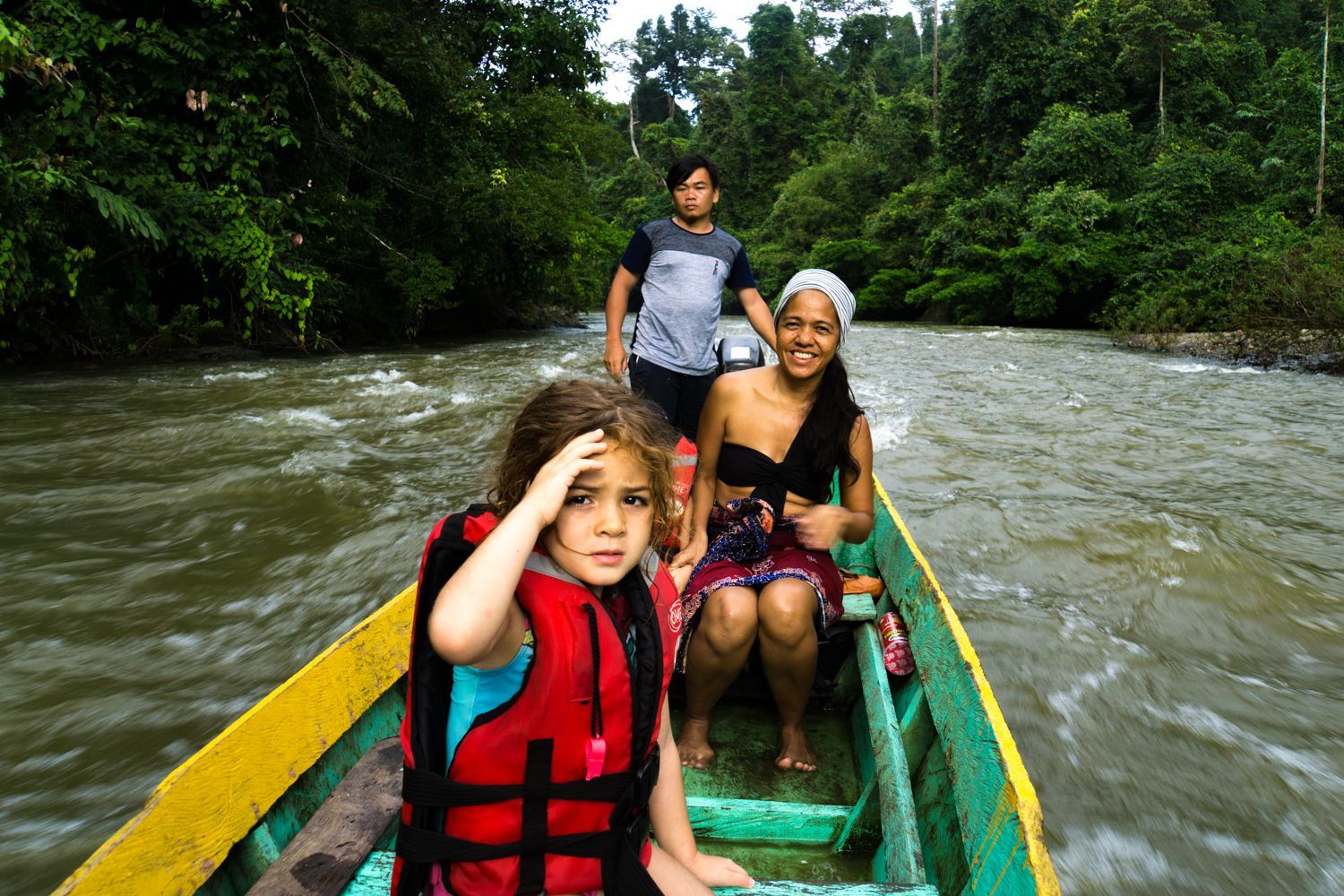
Danum Valley Bole River
Sungai Bole - the alternative river less cruised
(written by Itisha Ismail)
As travellers don’t we all crave to land in a place where the river, the island, the sea, the mountains, the jungles were catered exclusively for us? To snap that beautiful panorama with the caption “Just us and no one else on this mystical river in the forest!” That would be a slice of privilege wouldn’t it?
Of course, I realize that such scenarios would not appeal to all. I do realize that some travellers prefer the buzz. What I described above would be a torture, a walk to boredom land to those who prefers crowded, noisy and touristy hot spots.
Think:
- Surfing/lazing spots and early Bintang beer binging in the morning at – Kuta Beach in Bali, or
- Snapping a smiley picture of yourself with the famous stunning rock cliffs emerging from the surface of the sea at the famous James Bond Island in Phuket, or
- Dolphin watching at Lovina, Bali. An experience to feel like paparazzi as 10 to 20 engine boats rush to the next group of emerging dolphins.
Absolutely nothing wrong with buzzy hot spots. A place is considered touristy because people love it and most of the time it features iconic symbols such as the Eifel Tower in Paris or the Great Wall of China in Beijing or the Statue of Liberty in New York. So, buzz free or not, for iconic destinations - as travellers you need to go to the exact coordinates to experience and witness those sights. There are no alternatives, right? Unless of course if you visit theme parks such as the Lego Land with the miniature replicas.
Here, in the rustic small town of Lahad Datu there are alternatives worth exploring. Bike and Tours researched the less cruised Bole River which is a tributary of the major Segama River that flows through Ulu Segama Forest Reserve under Class 1 (Protection Forest). This river also connects the area to the Danum Valley Conservation Area.
Some years back when we first started promoting and introducing Bukit Piton in Danum Valley to travellers, we did explore the Segama River. In fact, we conducted a few tours that combined the Segama River with Bukit Piton tour. However, Simon was not too keen on the landscape which had some mix of the jungle with palm oil plantations. Though we stopped selling the Segama River tour, it was Simon’s dream to venture to the less trawled stream - the Bole River.
Due to other commitments, the Bole River exploration was often a time rescheduled before we finally made it! Thanks to the help of our license nature guide Hendry and his Grandad (better known as Atuk Bilau ) and the Sabah Forestry Department, our recce tour took place on 16 Feb 2020. And as our business is a family run business, this recce tour included our young explorers – Olivia and Emelyn onboard.
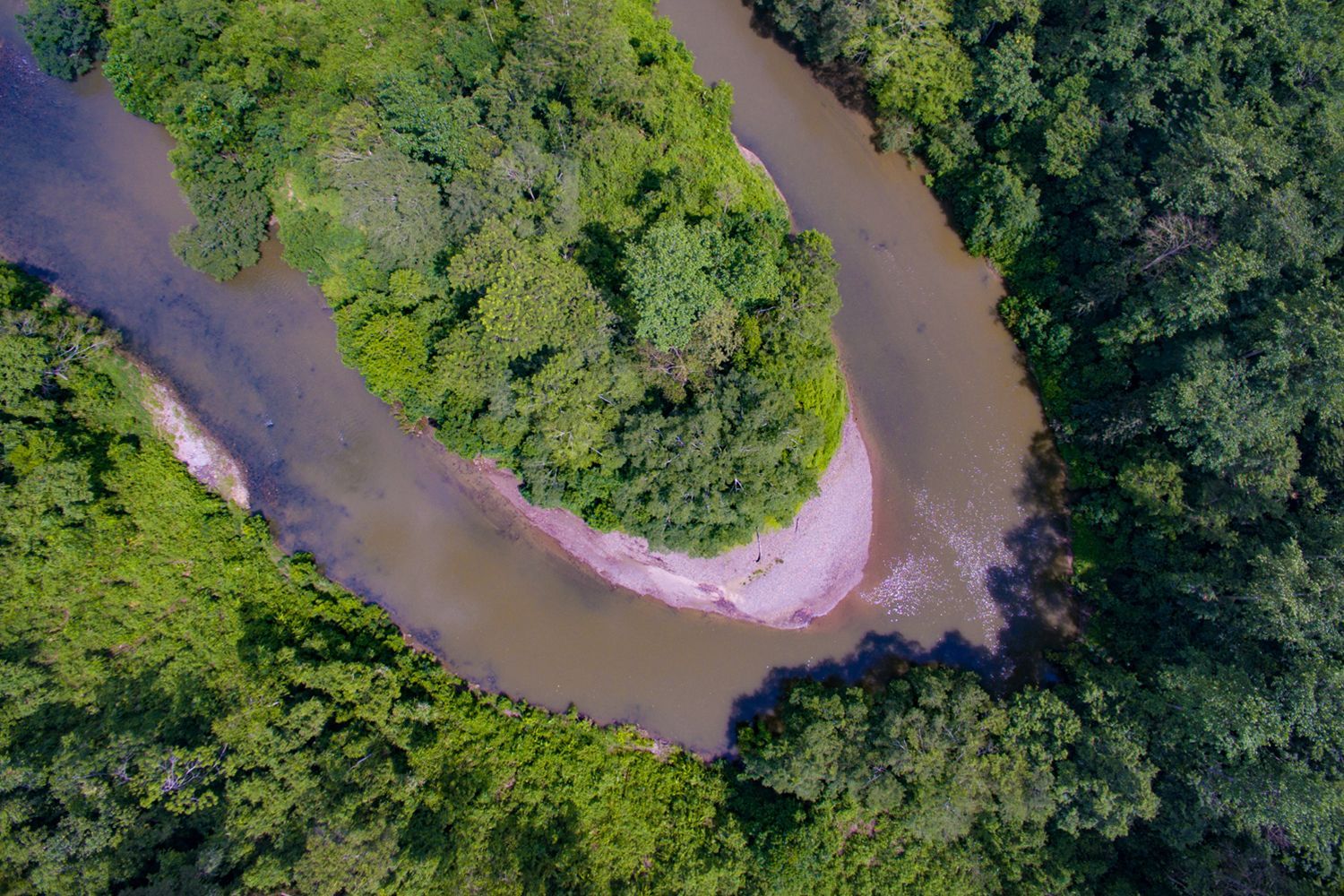


Sunday 16 Feb 2020
Hendry had just finished the early morning safari at Bukit Piton with our Danish guests. They had a good tour the day before and that morning with sightings of the orangutan, nocturnal which included the slow lories, moonrat, civets and many different species of birds to name a few. We spoke for a while to gain feedback on the tour before parting ways. As we spoke to them, we thought of what a great unique tour we could offer when we combine the Bole River tour with Bukit Piton tour! It would be an amazing Borneo jungle river adventure destination.
Hendry led the way to his grandad’s place. The bumpy off-road that could only be accessed with a 4WD steered us through some parts jungle, some parts estates. The road was narrow and should you not concentrate your bumper may just dive straight into the invisible muddy holes. At times we felt like our heads and body were one of those annoying wobbly figurines that people place on their dashboard!
As our vehicle took a final turn towards a tapered lane, we could see Atuk Bilau and his family waving and greeted us with huge smiles across their faces. They are the Orang Sungai (people of the river) from the Dusun Segamo tribe and have been living in this area over a few decades. As they live close to the river, their economic means are derived mostly from the river and are skilful boatmen and fishermen. We engaged in a conversation, but I was rather distracted by the soft white noise coming from behind their home. The Segama River was calling us to discover its cousin the Bole River. What better way to discover this place than being led by the family members of Atuk Bilau who knows this river at the back of their hands.
We walked down the muddy path towards the river where Hendry’s uncle named Hardy awaits next to an open concept traditional handcrafted wooden boat. He was our captain for today’s exploration. A huge canvas covered part of the boat. It shielded our lightly packed materials which consisted of drone/camera/gps and food materials that was prep by Atuk Bilau. That was pretty much it. We were already in our swimwear just in case if it gets too hot and if we need to jump in the water. Sunblock slapped on our skin, hats/bandana on our head and lifejackets on and we were ready to hit the river.
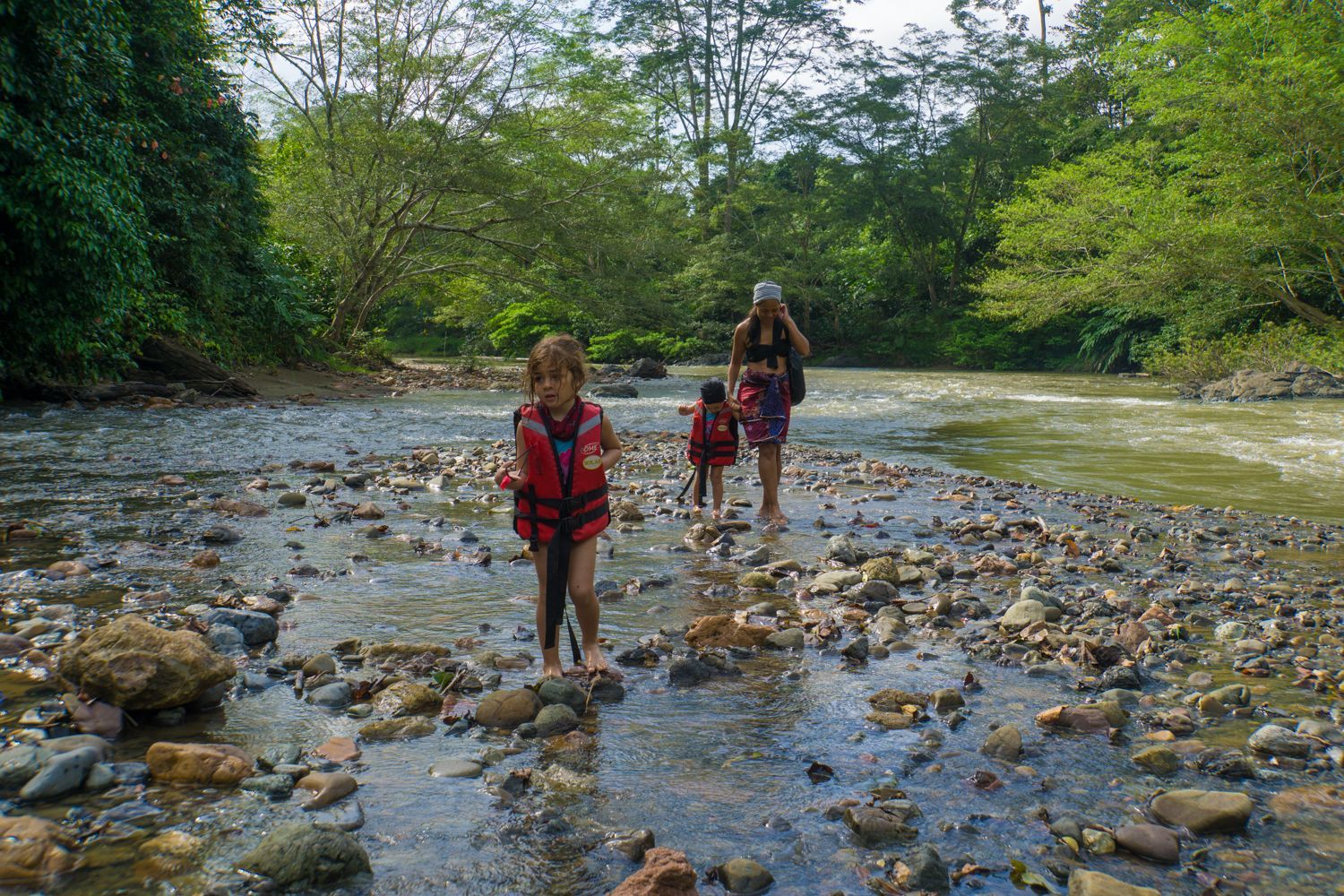

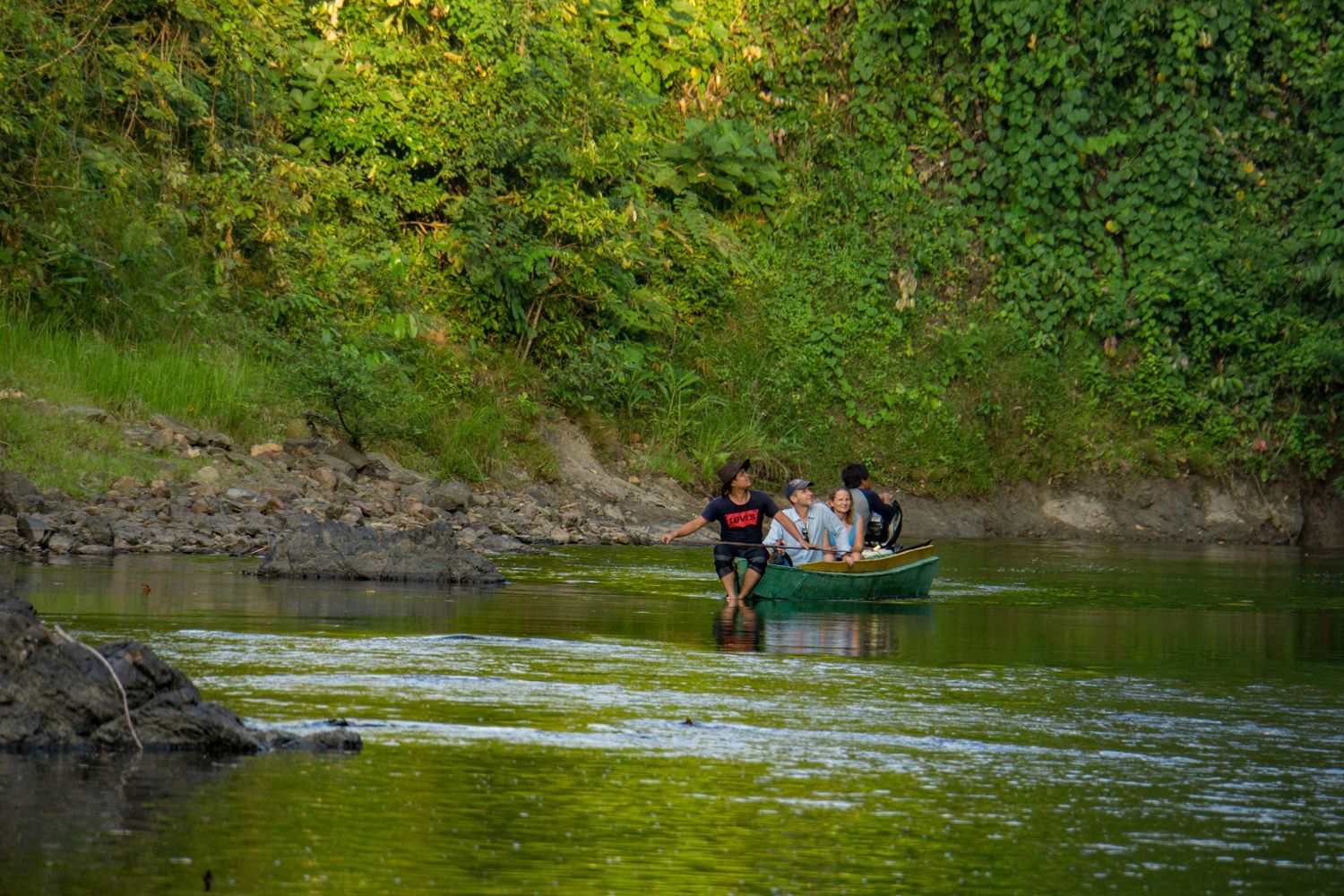
The Scenery and activities in the river-jungle
The water was cold, the pebbles on the river floor were clearly visible. A few of us had to give the boat a good push in the beginning as the water was rather shallow. As we cruised further, the depth of the water levelled up for our boat to wander at a reasonable speed and without one of us turning back to check if our Captain was doing alright.
We ventured deeper along the meandering river, passing curves and banks. Before we knew it, we entered the introductory scene of “Sabah- Borneo’s Jungle Book” directed by no one ever! At least not yet. But Mowgli, Tarzan and Jane, Robinson Crusoe and Chuck Noland (Tom Hanks of Cast Away) would be envious and would want to be featured here.
The view was heart-stoppingly beautiful! Still opaque emerald green fresh water; often broken by white bubbling streams. Unpolluted. Probably this is one of the last unspoiled freshwater ecosystems within Borneo. No trash was detected – not even 1 ugly floating pet bottle. The Bole River stayed steady in the middle of towering canopies of different hues; of never-ending green rainforest. Specs of orange, yellow and red fruit and flower trees added depth to the green forest. The breeze despite it being hot, felt amazingly fresh and light.
We experienced an orchestra of nature from the cicadas and crickets singing their soul; to the birds chirping the blues; to the sudden wing flapping hornbills that came out from the fig trees; to the breaking of branches sound as the mischievous long-tailed macaques swung from one tree to the other! The girls had to keep up with this exciting picturesque sight.
We were pleasantly isolated by the remoteness and rich presence of nature. No passing boats. No one else at sight. Just us and the jungle and the river.
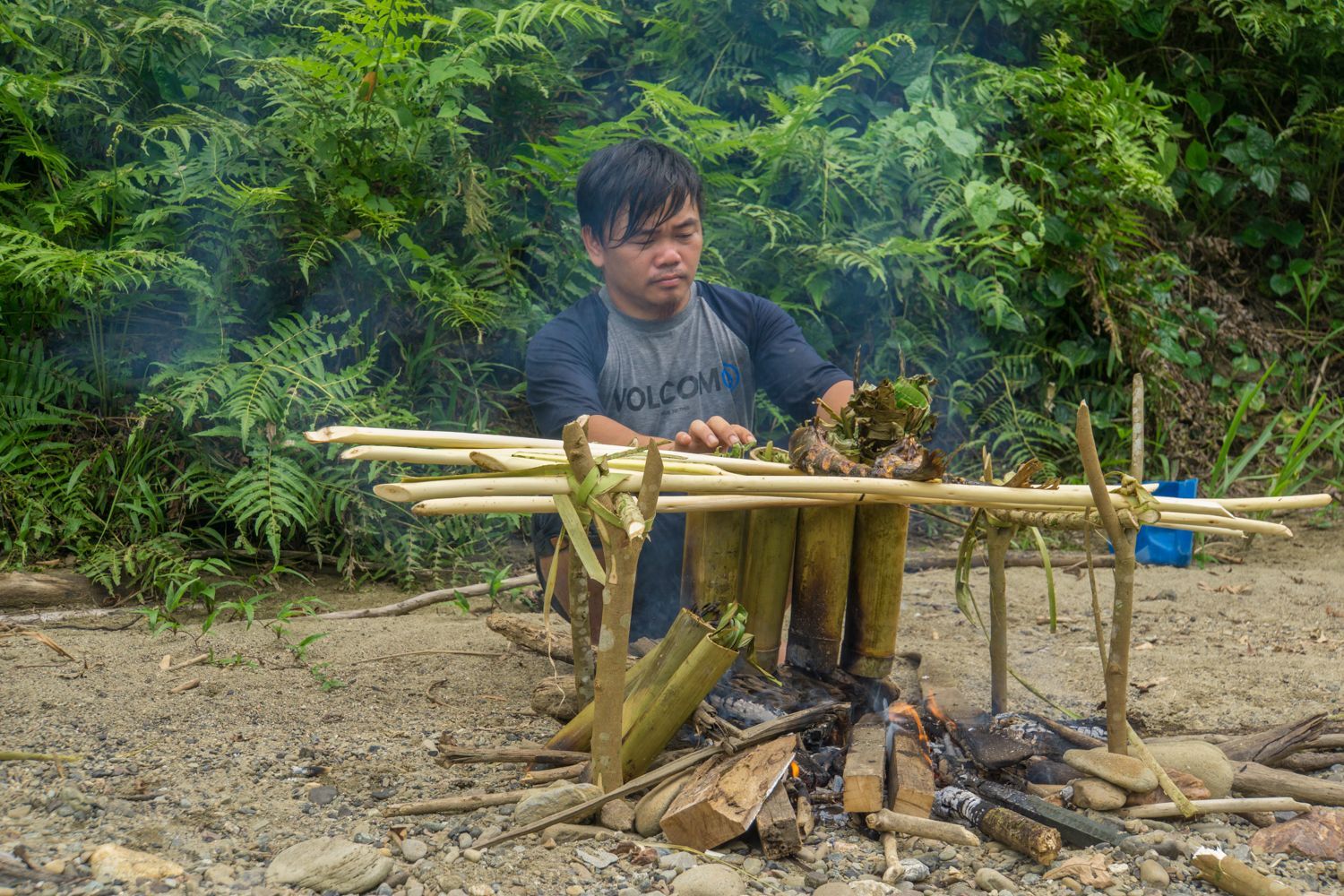

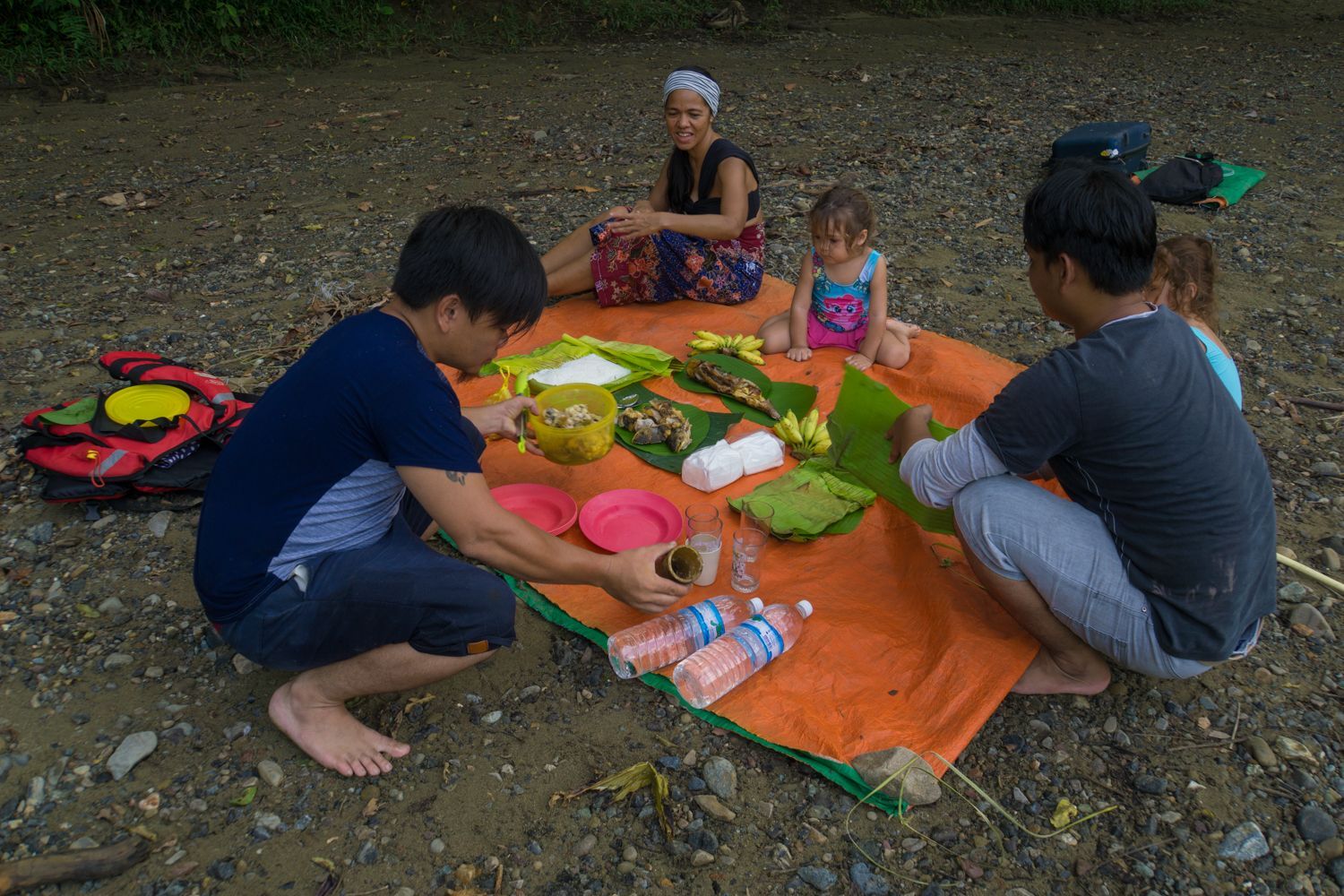
Patin – an edible epiphany!
Soon it was lunch time and were we in for a surprise. Growing up, most Malaysians like myself take our food seriously at a very young age. I am a big fan of local Malay and tribal food. There is something exciting when food are cooked in leaves, coconuts or bamboos. So, when I saw Hardy was on the lookout for woods and weaved the stand for the fire, I told myself “Be still my beating heart and growling hungry tummy as authentic tribal food awaits”. The kids and Simon took a dip in the water. The current was a bit strong so girls took turns to glide along the river with daddy.
I watched on how focused Hardy was at setting up the fire in preparation for lunch. Boy did he prepare ikan patin (patin fish) feast for us.
Just in case if you have not heard of patin fish, it is a silver freshwater catfish also known as Basa fish or Pangasius. To be honest, I WAS NOT a fan of patin fish. Noticed how I use the past tense for my penchant for this fish? Well, this authentic culinary experience totally changed my palate preference. To cut my already long story short, I just learnt from Hardy that if the fish is caught in murky water it gives a muddy smell and taste when cooked. This matches my previous experience with this fish. But, if the fish is caught in flowing freshwater with a rod and line (not farmed in a pond), the taste is wildly out of this world! And this was how the fishes were caught by the Bilau family.
Our lunch was an exotic culinary experience on its own. The patin fishes prepared by the Bilau family was an edible epiphany! Ikan Patin in 3 styles. The fried ones (pre cooked from home), smoked fish and another fish stewed in bamboo stem filled with local herbs. This was served with steamed rice wrapped in banana leaves. Combined with rich omega goodness, the skin was silky, and the flesh was firm yet soft and melts like butter with each bite. Infused with different local seasoning, fresh herbs and authentic way of cooking, it is an experience that will definitely please the purists.

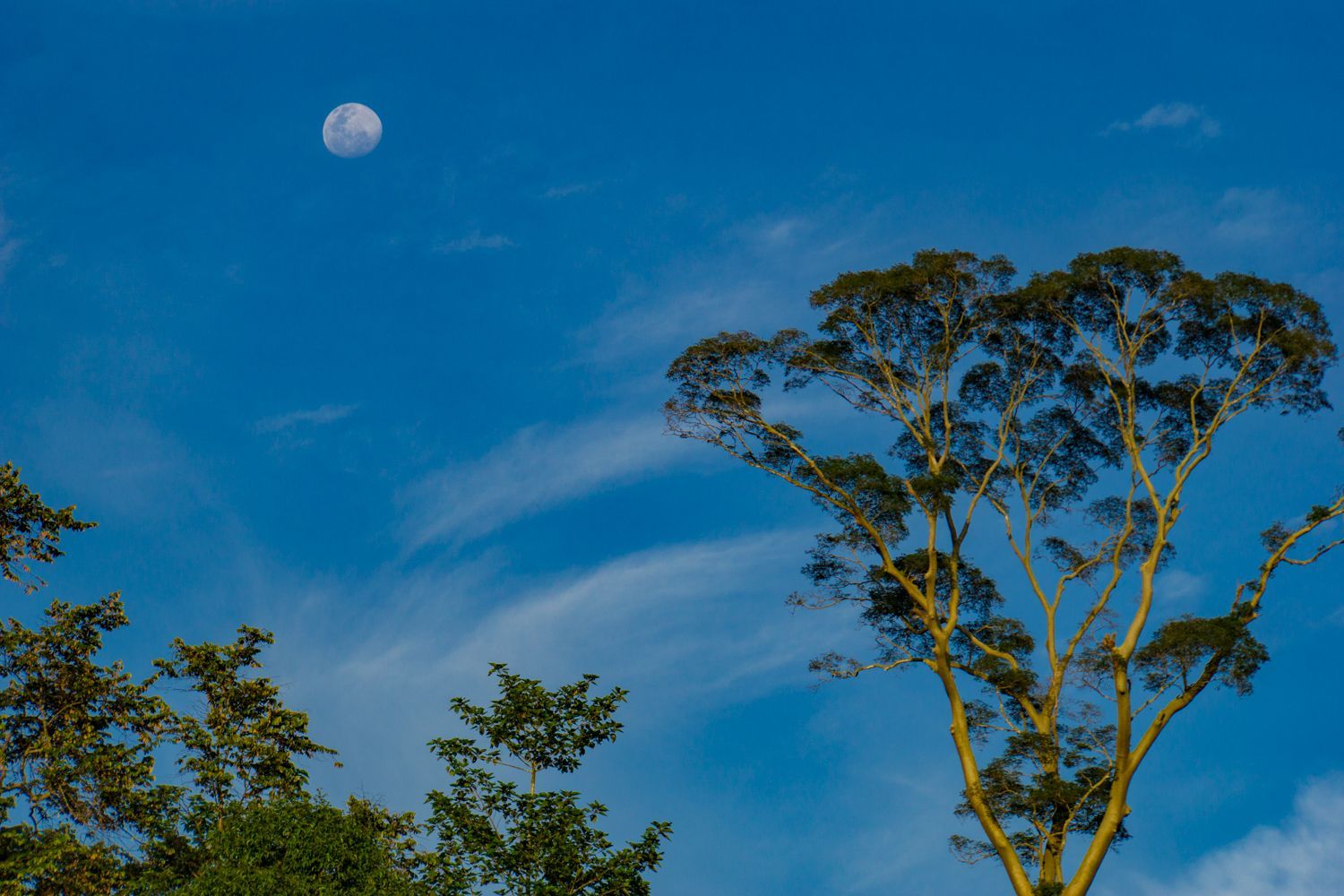
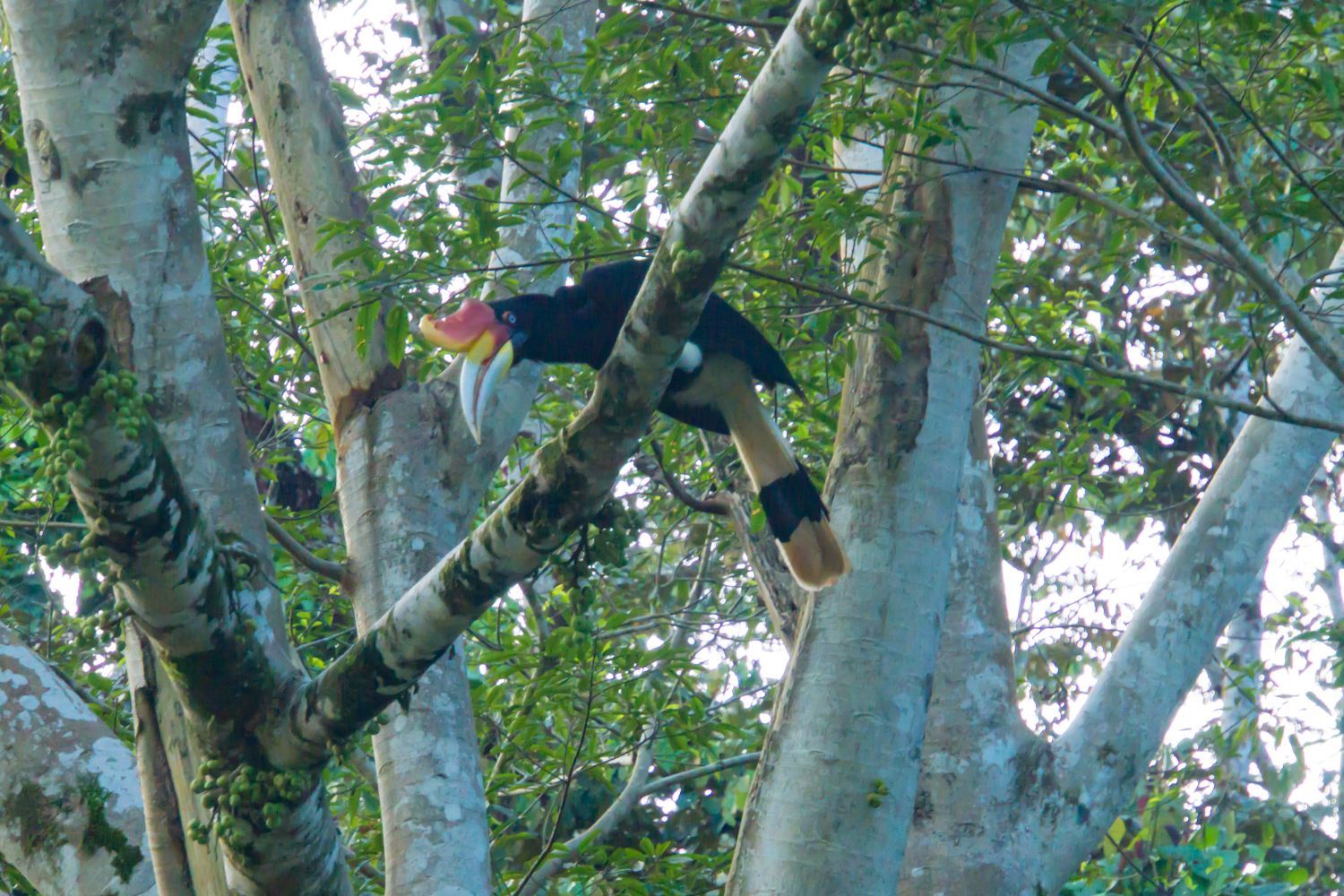
Monkey Business at Bole River!
I could have dozed off being wrapped in nature and after doing justice to the food. But the art on the blue sky seemed to be dappled with different shapes of grey cottons. So, before it pours, we decided to proceed to discover more of Bole River. Our boat wandered through the forest, welcomed by strays of swaying leaves, low bushes and branches that comes its way. At one point it moved rather slow that all of us walked on the pebbled ground whilst the guys pushed the boat. At one point the grey clouds could no longer hold its content and we were showered by the rainwater.
Wet hair, feet and swimwear did not stop our exploration. We saw a few orangutan nests but the Pongo pygmaeus morio was nowhere in sight. However, that’s the wild isn’t it? Not the zoo or a sanctuary where sightings are almost guaranteed. Privileged and grateful by what we have seen so far, little did we know that the best was yet to come.
What we were about to witness next was simply unbelievable and something we used to believed in, that stands to be corrected. Hendry was seated at the first-class seat on the boat, he caught sight of something ahead and pointed in that direction “Maju (move forward)” he said to Hardy. I could only see a huge green tree with rustling dried leaves falling. As our boat moved closer, I could hear the sound almost like a growling crow and saw specs of reddish brown colours playing hide and seek in between the trees. “Proboscis monkeys!!!” shouted Olivia excitedly. “No Via, it couldn’t be the proboscis as they live near mangrove areas” I calmly broke to Olivia as I was pretty sure she spotted the red leaf monkeys. Hendry turned to look at me with huge eyes “She is right, it’s the proboscis monkeys!!!” What? I thought that these species of monkeys only live near mangrove area like lower Kinabatangan River or Sungai Kapur!
There you go, a new lesson for us. The proboscis monkeys are MOSTLY found near the mangrove forests as they feed on mangrove shoot and leaves. However, they are not vegans as they occasionally eat insects too. So it is not necessarily that they need to live in mangrove forests. In terms of their living preference, besides the mangrove forests they could also live at dipterocarp and riverine forests.
It was amazing, there were plenty of the proboscis monkeys at the Bole River. Our boat stopped in the middle of the river as we enjoyed a good hour to the spectacular view of the proboscis monkeys within different harems. Lost in our own world, the silence was broken with “Daddy lets go home” Emelyn said after being in the boat for too long. I looked at my phone and it displayed 5pm. Indeed, Emelyn was our alarm clock/timer notification to head back.
Could have been a good photo!
As we were heading back, our little wildlife spotter Olivia pointed to something behind me and shouted “Big bird!”. We all looked behind and it was a beautiful rhinoceros hornbill perched gracefully on a low branch. Without hesitation, Hardy turned the boat back towards the hornbill. Simon took out his camera, the hornbill does not seem to be bothered by our intrusive presence. We were at a respectable range where Simon could take an amazing photo of the bird…..snap! His camera shutter automagically shut down. With all the photo session that we engaged in today, the battery surrendered and resigned. The giant bird then flapped its majestic wings and soared leaving us behind. Could have been a good photo. Albeit the flat battery, I take it as a good sign when the hornbill greeted us upon our arrived and bid farewell when we left. Bole River you have been amazing, till we meet again.
Note: In early March 2020 (about 2 weeks after our recce tour) we managed to introduce the Bole River to an American family who were privileged to experience the beauty of Bole River together with a night safari in Bukit Piton.
We had 2 other tours to Bole River for our guests which were scheduled to take place middle and late March 2020 but had to be postponed due to the Movement Control Order set in relation to the Covid-19 situation. (Blog part 1 and part 2)
If the Bole River Safari inspired you, do write in to us for when it is safe to travel again this offbeat river exploration may be your next holiday destination.

